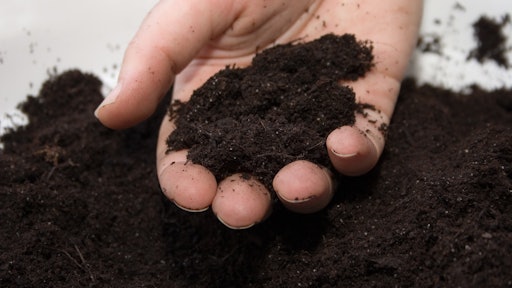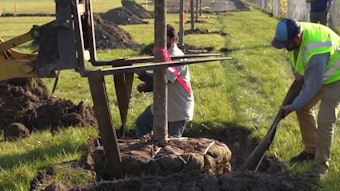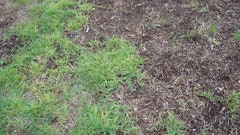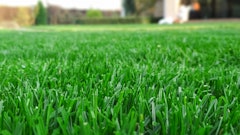
Soil enhancement is the process of improving the physical, chemical and biological properties of soil to create a more favorable environment for plant growth, nutrient cycling, water retention and overall ecosystem health. This can involve various practices and techniques aimed at optimizing soil quality and productivity. The goal of soil enhancement is to create a balanced and nutrient-rich soil structure that promotes healthy plant growth, minimizes environmental impacts, and supports the long-term viability of the land.
Enhancing the soil quality of a property can bring about several benefits that contribute to the overall health and vitality of a lawn, the environment and customers' own well-being. A soil's composition and pH levels can impact growing conditions so you may want to consider practices such as adding compost, using organic mulch, practicing proper watering techniques depending on local agronomics. Healthy soil contains essential nutrients that grass and other plants need to grow and thrive. Enhancing the soil can increase the availability of nutrients like nitrogen, phosphorus and potassium, which are vital for healthy plant growth.
The benefits of soil enhancement:
Environmental
Healthy soil contributes to overall ecosystem health by promoting biodiversity, carbon sequestration and water filtration. It supports the larger ecosystem and helps create a more sustainable environment.
Better water retention
Soil amendments can help improve water retention capacity, preventing water runoff and ensuring that a lawn receives adequate moisture. This is especially important during dry periods, as it reduces the need for excessive irrigation.
Improved drainage
On the flip side, enhancing the soil can also aid in improving drainage in areas where water tends to accumulate. This helps prevent waterlogged soil, which can lead to root rot and other plant health issues.
Enhanced root development
Healthy soil provides an environment conducive to strong root development. Well-developed roots anchor plants securely and allow them to access water and nutrients more effectively, resulting in better overall plant health.
Increased microbial activity
Healthy soil is teeming with beneficial microorganisms that play a crucial role in breaking down organic matter, cycling nutrients, and suppressing harmful pathogens. Enhancing the soil encourages a diverse and active microbial community, which contributes to overall soil health.
Disease resistance
Healthy soil helps plants build natural resistance to diseases and pests. Strong plants are less susceptible to infections, reducing the need for chemical treatments.
Enhanced aesthetic appeal
Well-maintained lawns with healthy soil tend to have vibrant and lush greenery, making an outdoor space more visually appealing.
How to perform soil enhancement
Keep in mind that soil enhancement is an ongoing process, and it might take time to see significant results. Proper cultural practices like proper mowing, watering and aeration also play a crucial role in maintaining a healthy lawn. They represent the simplest and most economically efficient method for enhancing soil health. A healthy, well-maintained lawn of about 2,500 square feet can produce enough oxygen to support a family of four.
Water efficiently
Proper watering practices are crucial. Water the lawn deeply and infrequently to encourage deep root growth. Water in the early morning to reduce evaporation and fungal growth. Consider using a rain gauge or a soil moisture sensor to gauge when the lawn needs water. This can vary by region depending on the time of year and weather conditions.
Mowing and mulch lawn clippings
During the heat of the summer, it’s always best to raise the mowing height and this will depend on the variety of grass you have in a lawn. Leave grass clippings on the lawn after mowing to naturally recycle nutrients and contribute to organic matter buildup. This practice is known as "grasscycling."
Proper fertility
Choose a balanced, slow-release fertilizer with the appropriate nutrient ratios for a lawn's needs. Apply fertilizers in accordance with the manufacturer's recommendations to avoid over-fertilization, which can harm a lawn and the environment.
Core aeration
This process is the removal of small cores of soil and thatch (the thin layer of organic debris below the grass roots) from the lawn. In general, it is recommended that you aerate a lawn at least once per year. However, certain lawn conditions, like thick layers of thatch or heavily compacted soil, such as clay, may require you to aerate the lawn more frequently. This process will reduce water run-off, encourage the development of a deep root system, and allow moisture and nutrients to penetrate deeper into the soil. A deeply rooted lawn will be much healthier and better able to withstand drought, disease and insect stress.


























